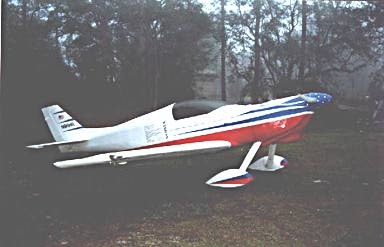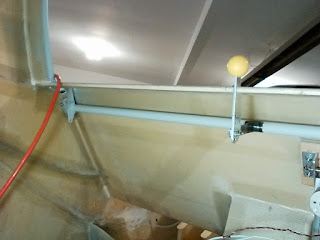April 5 2021
I bonded blocks of soft foam onto the ends of the wing tips and then began to shape a simple tip which was pleasing enough to me. I then covered the pink soft foam in packing tape as a release agent for the fiberglass. The foam being so soft is great for carving but is delicate and requires care when touching it. Sanding the surfaces of the upper and lower tip edges gave a good bonding surface. I laid up the upper and then the lower surfaces first because I knew that it was going to be difficult forming the compound curves around the tip. This way I would have a firm surface to work the edges of the outer cloth onto the hardened upper and lower surfaces. Because the outer three layers now cause a small step in the surface I will have to fill with filler. The foam blocks were attached with two part auto body putty dabs placed randomly over the outer wing rib. The tip came off the mold quite easily as the release tape worked excellent and the foam broke away from the auto body putty. It was a bit of work to get them off though and I had to work tools between the fiberglass and the release tape before pounding on the surface to get the foam to break free. The foam came out of the inside of the tip after removal. They can be pried out or the whole foam plug can be dug out later if it is difficult. One of mine came out very easy and the other needed persuading and a few chunks of foam broke out.
The tips were attached and holes drilled at each nut plate location. The new tips overlap the aileron and so a piece had to be trimmed off to allow the aileron to move. Once trimmed I made a rib to fit inside the tip at the aft end to add rigidity and to close off airflow into the open aft end of the wing tip. This was bonded on with a thin layer of epoxy/flox.
The instrument panel central radio section was modified for a Dynon radio head and the far right section modified to allow the ELT remote switch and 3 pull off fuses for the Flaps, Auto Pilot and Avionics. Panel sections were then painted in semigloss black.














































